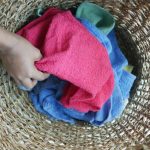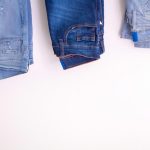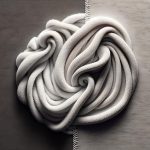You're likely familiar with the comfort and versatility of French terry, a textile staple in the fashion industry. But what's next for this beloved fabric? As consumer demand for sustainable and high-performance clothing continues to grow, manufacturers are responding with innovative solutions. You'll soon see French terry products that not only feel great but also boast advanced features like temperature regulation and antimicrobial properties. But that's just the beginning – the real question is, what other groundbreaking trends will shape the future of French terry in the textile industry? The answer might just revolutionize your wardrobe.
Table of Contents
Sustainable Production Methods
As you explore the future of French Terry, it's clear that sustainable production methods are becoming a crucial factor in its evolution. You're likely to see a shift towards environmentally friendly manufacturing processes that reduce waste and minimize the textile industry's carbon footprint. This might involve the use of renewable energy sources, such as solar or wind power, to power production facilities.
You'll also notice a greater emphasis on water conservation, as French Terry manufacturers adopt more efficient dyeing and finishing techniques that use less water. Additionally, you can expect to see a reduction in chemical usage, as companies opt for more eco-friendly alternatives that are gentler on the environment.
As a result, you'll be able to enjoy French Terry products that not only feel great but also align with your values. Sustainable production methods will become the new norm, and you'll be able to trust that your favorite French Terry garments are made with the planet in mind. By choosing sustainable French Terry products, you'll be supporting a more responsible textile industry that prioritizes the environment.
Innovative Fiber Blends
You'll likely see a significant increase in the use of innovative fiber blends in French Terry production, combining traditional cotton with cutting-edge materials like recycled polyester, Tencel, or even plant-based fibers. This shift towards innovative fiber blends is driven by the growing demand for sustainable and eco-friendly textiles.
| Fiber Blend | Benefits | Applications |
|---|---|---|
| Recycled Polyester + Cotton | Reduces waste, conserves resources | Activewear, outdoor apparel |
| Tencel + Organic Cotton | Soft, breathable, and moisture-wicking | Loungewear, sleepwear |
| Hemp + Recycled Polyester | Durable, UV-resistant, and insulating | Outdoor gear, workwear |
| Bamboo + Cotton | Moisture-wicking, antibacterial, and eco-friendly | Undergarments, socks |
Digital Printing Technologies
You're likely familiar with the versatility of French Terry, and now it's time to explore how digital printing technologies are transforming the fabric.
With the rise of Direct to Garment (DTG) printing, you can achieve photo-realistic designs and vibrant colors on French Terry.
Direct to Garment
Several digital printing technologies are revolutionizing the French terry industry, particularly direct to garment (DTG) printing, which allows you to print high-quality designs directly onto fabric without the need for screens or plates. This technology is a game-changer for the industry, enabling you to produce small to medium-sized print runs quickly and efficiently. With DTG printing, you can print complex designs and colors with ease, making it ideal for creating unique and personalized products.
The benefits of DTG printing include:
- Increased flexibility: DTG printing allows you to print on a variety of fabrics, including French terry, cotton, and blends.
- Reduced waste: With DTG printing, you can print only what you need, reducing waste and minimizing environmental impact.
High-Resolution Inks
With the advancement of digital printing technologies, high-resolution inks have become a crucial component in producing vibrant and detailed designs on French terry fabrics.
High-resolution inks are designed to work seamlessly with digital printing equipment, allowing for precise control over color and pattern. These specialized inks are a key factor in achieving impressive results through digital printing.
High-resolution inks offer a level of detail and vibrancy that's hard to match with traditional printing methods. This is especially important for fashion brands and designers who want to create intricate, high-end designs that showcase their unique style.
With high-resolution inks, you can achieve photo-realistic prints that will make your French terry fabrics stand out from the crowd. Whether you're creating statement pieces or everyday essentials, high-resolution inks can help you take your designs to the next level.
Performance Enhancing Treatments
As you explore the world of French Terry, you're likely looking for ways to take its performance to the next level.
You'll want to consider treatments that enhance its functionality, such as moisture-wicking technologies that keep you dry and comfortable.
Moisture Wicking Technologies
One of the most significant advancements in French terry is the integration of moisture-wicking technologies, which can be achieved through various performance-enhancing treatments. These treatments enable French terry fabrics to efficiently manage moisture, keeping you dry and comfortable during physical activities.
Moisture-wicking technologies are especially beneficial in activewear, where sweat can be a major issue.
Various moisture-wicking treatments can enhance the fabric's performance. Some of the most notable ones include:
- Nano-finishing treatments: These treatments use nanoparticles to create a hydrophobic (water-repelling) surface on the fabric, allowing moisture to evaporate quickly.
- Micro-encapsulation: This technique involves encapsulating moisture-wicking agents within tiny capsules that are embedded within the fabric, releasing them as needed to manage moisture.
Anti-Microbial Finishes
Treating French terry fabrics with anti-microbial finishes can significantly reduce the growth of odor-causing bacteria and fungi, keeping your garments fresh for longer and minimizing the need for frequent washing.
This is especially important for activewear, where sweat and moisture can create an ideal breeding ground for microorganisms.
By incorporating anti-microbial finishes into your French terry fabrics, you can create garments that stay fresh and odor-free even after repeated wear and washing.
You can choose from a range of anti-microbial finishes, including those that use silver, copper, or zinc as active ingredients.
These finishes work by releasing ions that disrupt the growth of microorganisms, preventing them from multiplying and causing odors.
Some anti-microbial finishes are also designed to be durable and long-lasting, withstanding multiple wash cycles without losing their effectiveness.
When selecting an anti-microbial finish, consider factors such as the type of fabric, intended use, and desired level of protection.
Thermal Insulation Methods
To enhance the performance of French terry fabrics, manufacturers are incorporating thermal insulation methods that help regulate body temperature, keeping you warm in cold conditions and cool in warm conditions. This is particularly important for activewear and outdoor clothing, where maintaining a stable body temperature is crucial for performance and comfort.
As a consumer, you'll benefit from thermal insulation methods that reduce heat loss and retain warmth. Manufacturers are using various techniques to achieve this.
- Moisture-wicking treatments: These treatments draw sweat away from the skin and allow it to evaporate quickly, preventing heat loss and keeping you dry and comfortable.
- Thermal insulation coatings: These coatings trap warm air next to the skin, providing additional warmth without adding bulk to the fabric.
Athleisure Dominates Fashion
One thing's clear: athleisure wear has taken center stage in the fashion world, and it's not going anywhere anytime soon. You've probably noticed that sporty-chic outfits have become a staple in many people's wardrobes. French terry fabric is a key player in this trend, thanks to its softness, breathability, and versatility. As a result, you're likely to see a surge in demand for French terry-based athleisure wear.
Here's a snapshot of the current athleisure market:
| Category | Growth Rate |
|---|---|
| Activewear | 10% |
| Loungewear | 8% |
| Outerwear | 6% |
These numbers indicate that activewear is driving the athleisure trend, with loungewear and outerwear following closely behind. You can expect to see more innovative designs and fabrics in these categories, including French terry. As a textile industry professional, you'll want to stay ahead of the curve by exploring ways to incorporate French terry into your products. Whether it's creating comfortable yoga pants or stylish hoodies, the possibilities are endless. By capitalizing on the athleisure trend, you can tap into a lucrative market and set your brand up for success.
Smart Fabric Integration
You'll see a growing emphasis on integrating smart fabrics into French terry products, enabling features like temperature regulation, moisture-wicking, and even wearable technology.
This trend is driven by the increasing demand for high-performance activewear that not only looks good but also provides comfort and functionality. As a result, manufacturers are incorporating innovative materials and technologies into their French terry products to stay ahead of the competition.
Some of the key smart fabric integrations you can expect to see in French terry products include:
- Conductive fibers: Allowing for seamless integration of wearable technology, such as heart rate monitoring and fitness tracking.
- Phase-change materials: Regulating body temperature to keep you cool in the summer and warm in the winter.
Frequently Asked Questions
How Does French Terry Differ From Regular Terrycloth Fabric?
You'll notice French Terry differs from regular terrycloth fabric in its unique construction, where loops are only on one side, giving it a soft, absorbent face and a smooth back, unlike traditional terrycloth's loops on both sides.
Can French Terry Fabric Be Made From Recycled Materials?
You're wondering if French Terry fabric can be made from recycled materials. Yes, it can! Many manufacturers now use post-consumer plastic waste, like plastic bottles, to create eco-friendly French Terry fabrics that are soft, durable, and sustainable.
Are Digital Printing Technologies Limited to Cotton-Based French Terry?
You're wondering if digital printing technologies are limited to cotton-based French terry. The answer is no, they're not. You can use digital printing on various fabrics, including blends, synthetics, and even recycled materials, depending on the printer's capabilities.
Will French Terry Clothing Trendiness Be Influenced by Seasons?
You might notice French Terry's popularity ebbs and flows with seasonal demands, like fleecy feels for winter. Trends for its comfort-wear tend to increase in cooler months. What matters to you in buying clothes in specific seasons?
What Does French Terry Production Require by Way of Textile Manufacturing Technology?
You'll need specialized textile manufacturing technology to produce French terry, including loopers, cutters, and finishers. You'll also require advanced knitting machines that can create the fabric's signature looped piles, and possibly 3D knitting technology for complex designs.
- How Does Ring Spun Cotton Affect Garment Fit and Shape Retention? - August 13, 2024
- What Are the Challenges in Producing Ring Spun Cotton? - August 13, 2024
- Is Ring Spun Cotton Suitable for Plus-Size Clothing? - August 13, 2024







